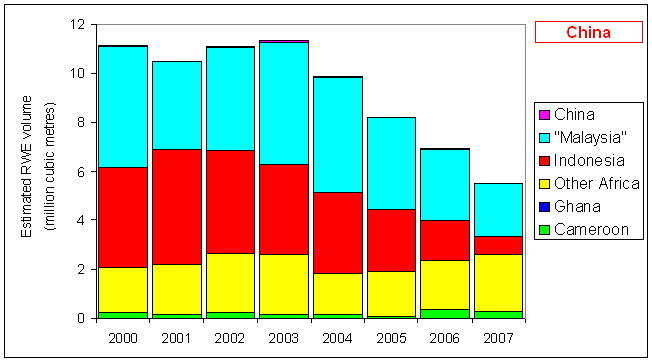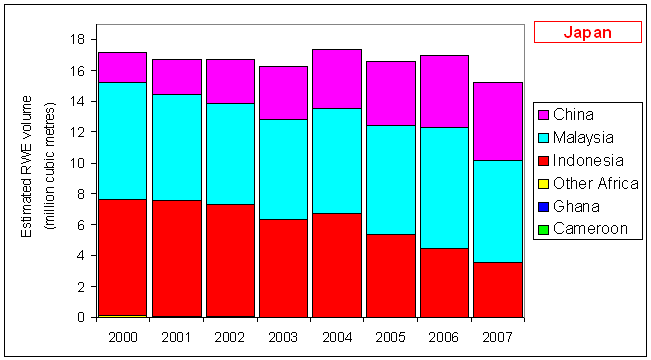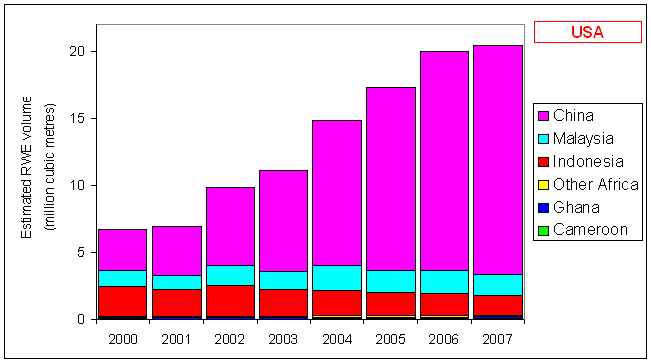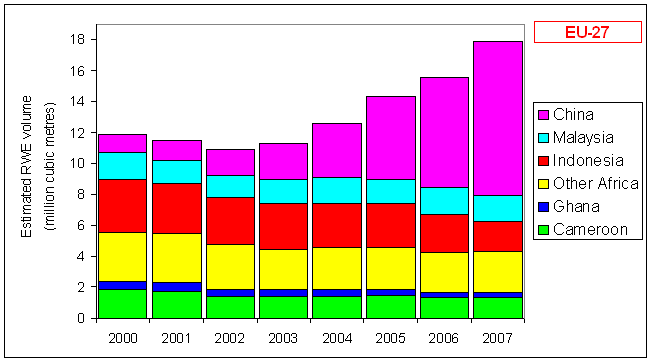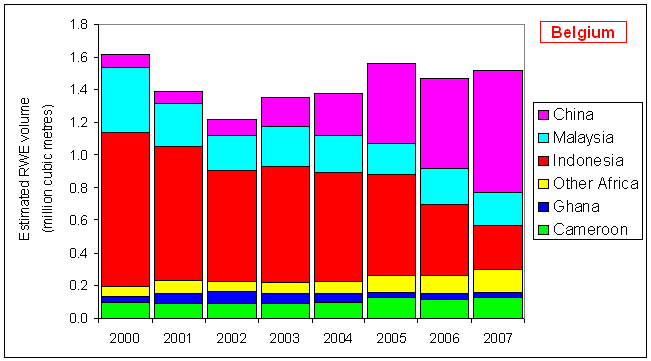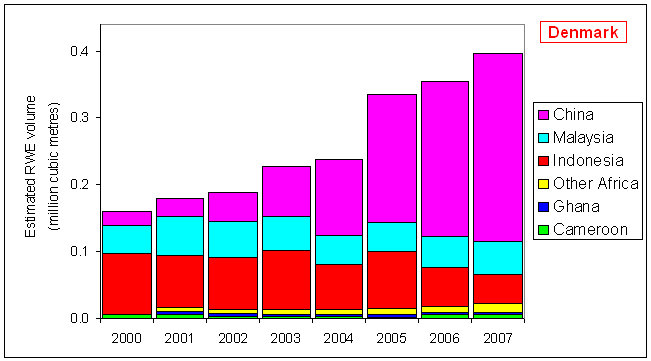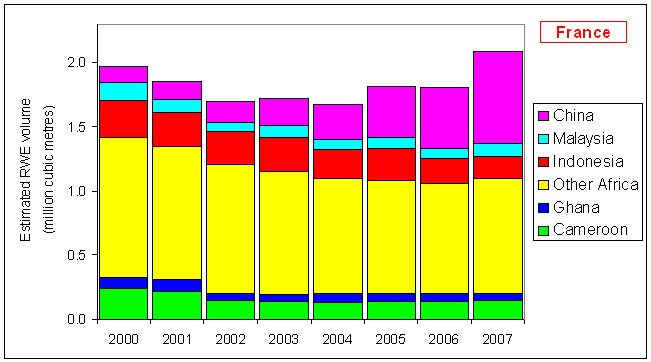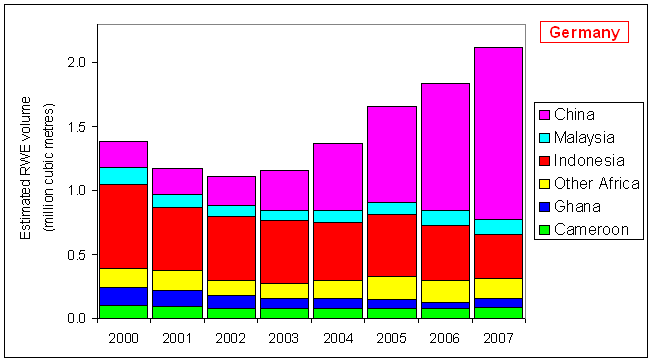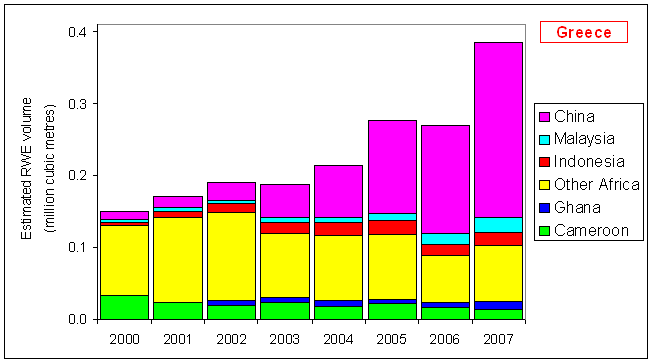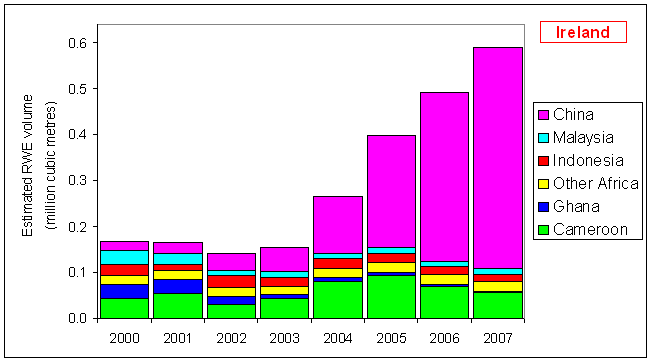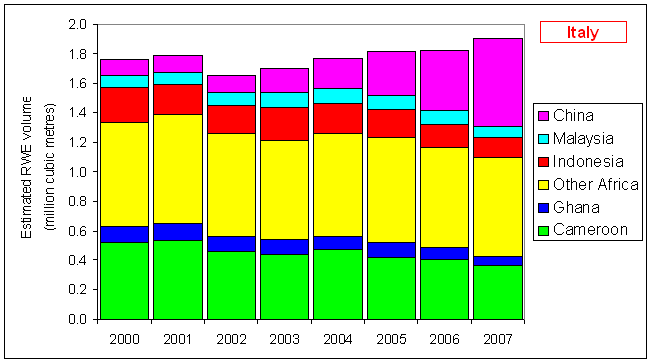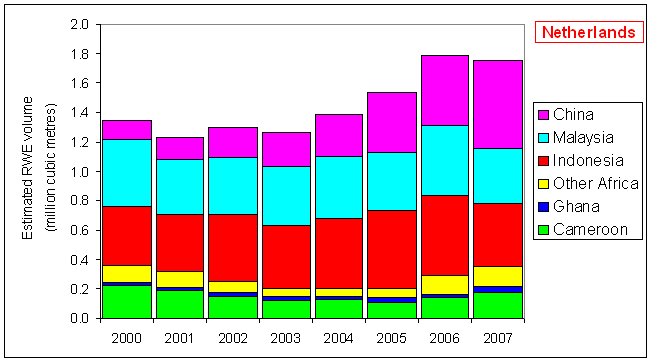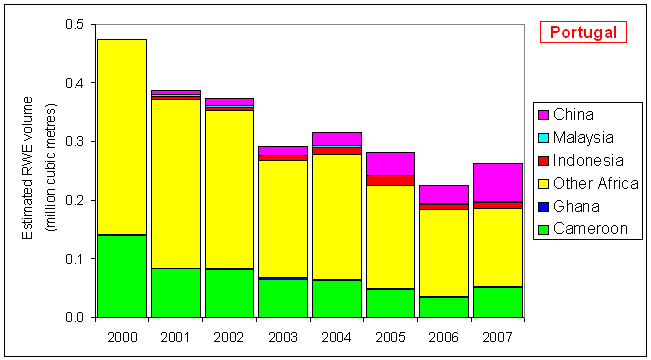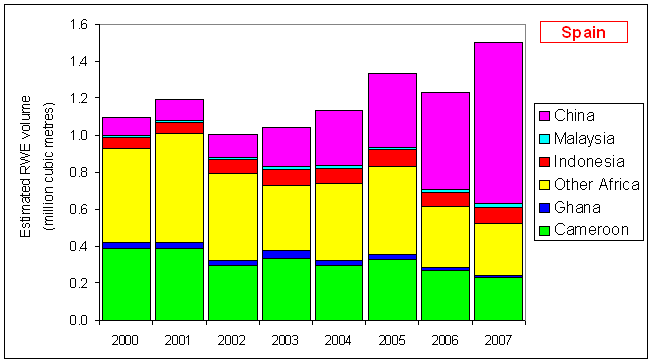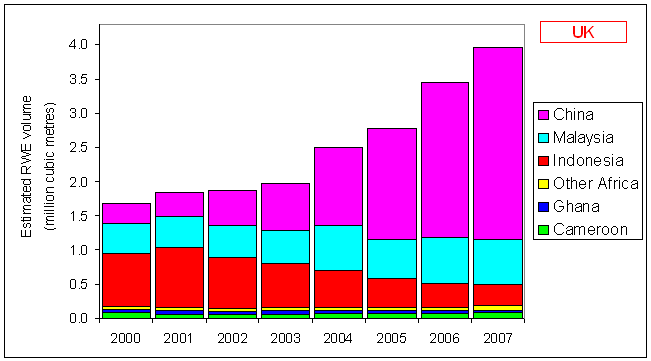|
|
||
|
|
||
|
Forest Law Enforcement and Governance in relation to China |
||
|
For commentary on the following charts see foot of this webpage Trends in High Risk
timber imports from
The following charts
pertain to leading importing countries in the EU-27
1)
Source of statistics for these charts: China Customs (including
China Customs Statistical Yearbook), Japan
Customs (including Japan Exports and Imports) US
International Trade Commission Dataweb, and Eurostat |
||
|
Much, if not most, of that increase from China comprises products which are unlikely to be from sustainably managed forest and is at high risk of including Illegal Timber. If the proportion of timber imported from China procured by or on behalf of (central) government is similar to the share of China in a country's timber imports, then one might expect much greater concern (by those responsible for designing and managing public procurement) about the sustainability and legality of supplies from China than is apparent. In relation to "Green" building codes (as apparent from the example of the UK), this neglect concerning supplies from China is tending to jeopardise timber's excellent potential as a versatile and sustainable building material relative to competitor materials (metals, plastics, brick, etc). Trade associations for those other materials seem increasingly to present a united front in lobbying against the use of timber. If those associations are successful, then timber imports from China are likely to collapse - unless there is a fundamental shift in procurement strategy by the timber trade generally, and government in particular, concerning the sustainabilty and legality of imports from China. For example, the draft British Standard BS 6001 favours materials with a substantial recycled material content - very little recycled timber is exported from China and, judging by industry comment about quality, much of the composite timber (especially plywood) exported from China might not be fit for recycling. Further, specific causes for concern in relation to supplies from China include those which pertain to legal principles and labour. Although the decline in imports by China might be construed as a laudable response to FLEG initiatives, most of the decline in imports of tropical timber has been offset by equivalent imports from Oceania and South America - which like other countries in southeast Asia are not shown on these charts and whose timber exports to China in particular are almost certainly associated with illegality and unsustainability. The charts also do not show imports from other High Risk countries, most notably Russia whose exports to China are increasingly likely to include Illegal Timber (particularly as enterprises seek to evade the export tariffs which are being imposed by Russia.) . |
||
|
Copyright
globaltimber.org.uk
|

